Milano
Area Porto di Mare – Rogoredo
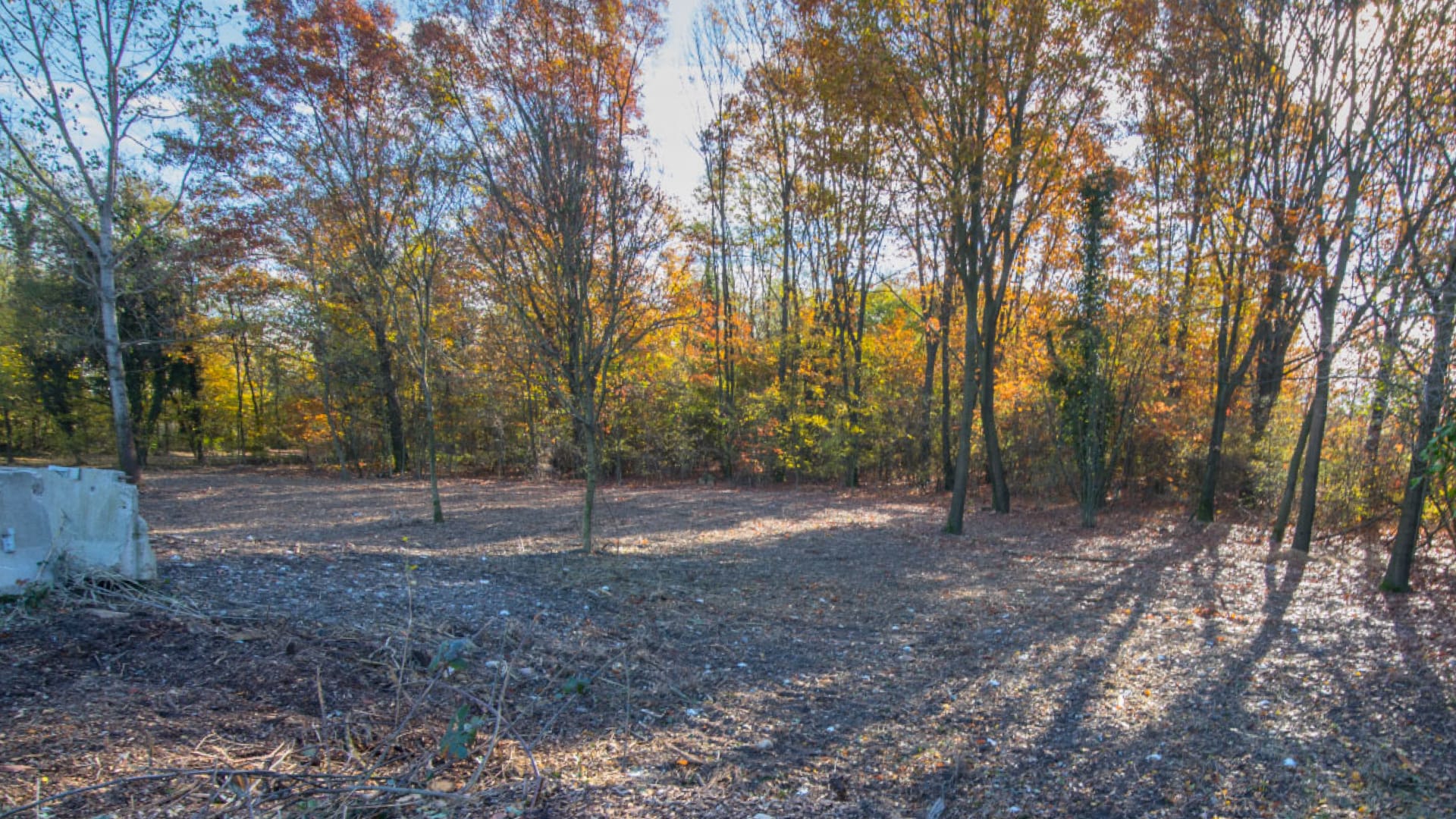
The Porto di Mare area, located in the south of Milan in an urbanised area between the city boundary and the Corvetto district, has a history of being used as a landfill for solid urban waste from 1973 to 1981. The area lies almost entirely within the perimeter of the Parco Agricolo Sud Milano and preserves important landscape elements and wildlife features of high naturalistic value that are recognised and protected at regional and national level. Since October 2017, the Municipality of Milan and the association Italia Nostra, with its Urban Forestation Centre, have been engaged in redevelopment work, which aims to recover the degraded area and make it usable for residents by planting new trees, consolidating the cycle and pedestrian paths, restoring the pond and grassland areas and cleaning up at least 50% of the area of the waste accumulated over the years.
Fastweb has therefore chosen to contribute to the redevelopment of this park by planting 2,000 trees, on a section of this area, which as they grow will improve the landscape and create shady areas to make the park more usable in summer.
Milan - Vettabbia Park
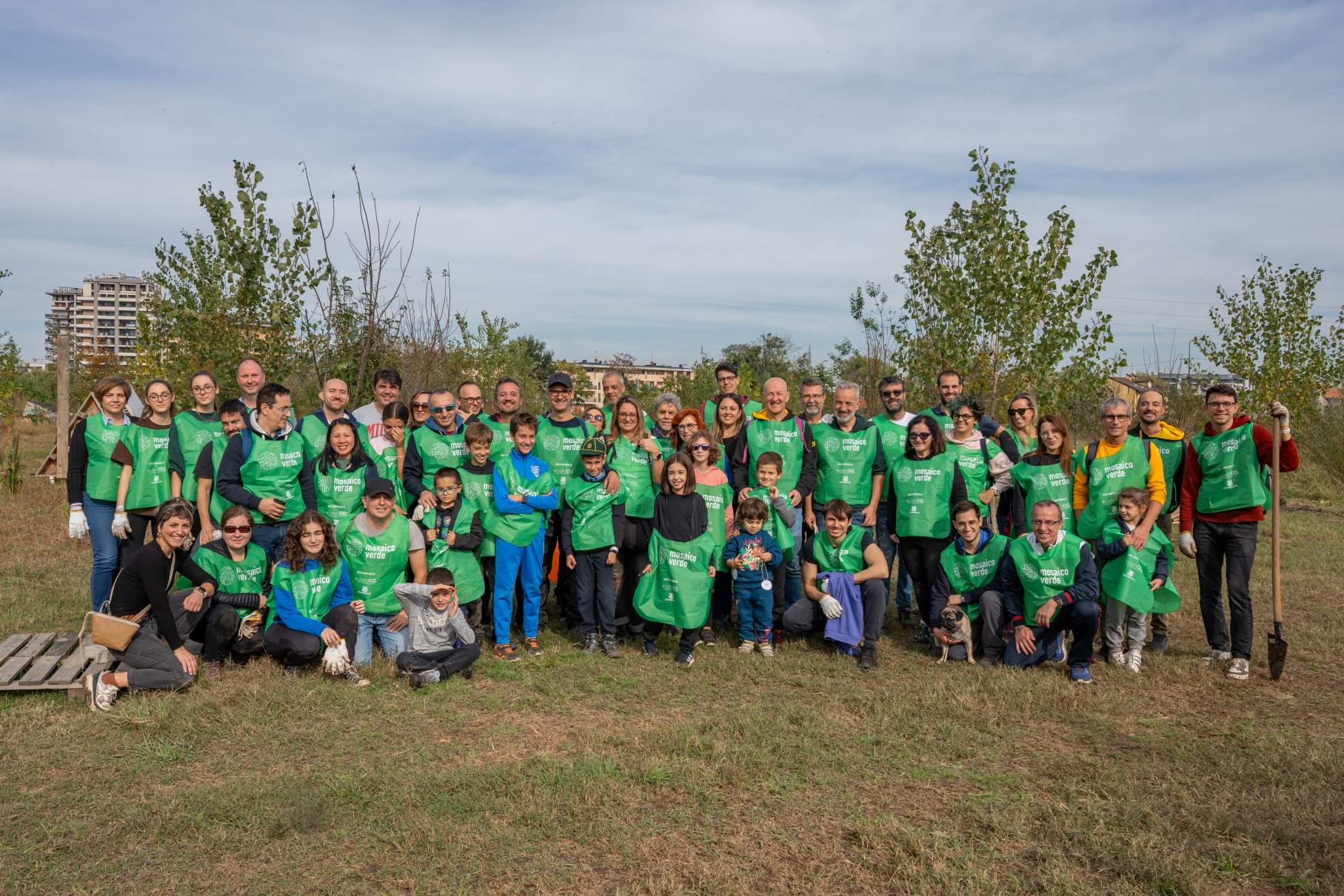
The area of intervention is located within the Vettabbia Park, managed by the non-profit social enterprise Soulfood Forestfarms, which operates as a global accelerator for socio-environmental regeneration through the implementation of complex agroforestry systems and the involvement of citizens and companies in the field of CSR.
The area is set and acts as a boundary between the urban area and the countryside, a symbol of urban regeneration: from the construction of the Fondazione Prada and the Fastweb headquarters to the reopening of the farmsteads in the surrounding urban area and the creation of new social spaces for locals.
By planting 1,000 plants, Fastweb wants to create a noise, dust and wind barrier and help absorb CO2. Species used: Field maple, black alder, wild apple, English oak, privet, white poplar, hawthorn.
Torino
Parco Piemonte
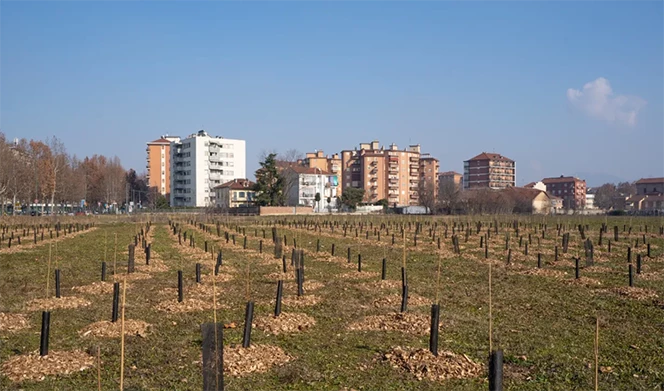
The reforestation projects were carried out in Parco Piemonte, which is located south of Torino, near the Mirafiori Sud plant. The project area is enclosed to the west by Corso Unione Sovietica, to the south and east by the Sangone river and to North from Strada Castello di Mirafiori.
The park has already been subjected to reforestation interventions as it had a scarce tree cover, with non-native plants, and had therefore been chosen by the Municipality of Torino as a place to be redeveloped. In fact, the Municipality of Torino has been implementing a Climate Resilience Plan, promoting urban forestation.
The project carried out with Fastweb saw the planting of 2,000 native plants, typical of the area. The plants will help create a wooded strip parallel to Corso Unione Sovietiva which will create a sound-absorbing barrier over time and will help mitigate the heat island effect, which is very widespread in the city. Furthermore, the chosen species will help restore and conserve the biodiversity of the place.
With the planting of 1,000 specimens, among trees and shrubs, Fastweb's goal is to reactivate the process of implementing greenery in Turin. Species used: field maple, white hornbeam, major ash, apple tree, cherry clusters (Pado), dogwood, dog rose.
Roma
Parco della Cellulosa
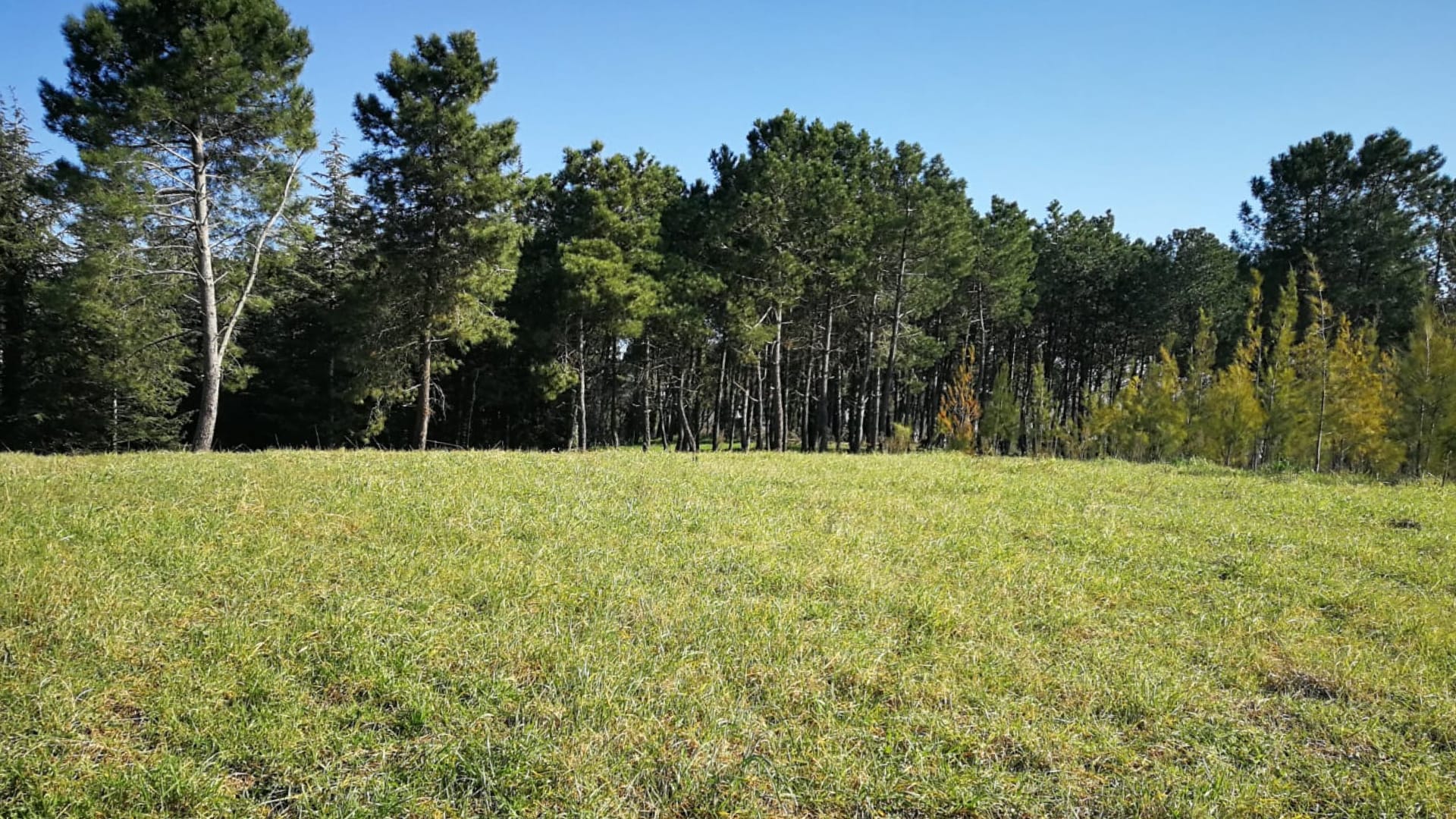
The "Parco della Cellulosa" Natural Monument, established by decree-law of the President of the Lazio Region in 2006, is a 90-hectare area that belonged to the Ente Nazionale per la Cellulosa e per la Carta (ENCC), founded in 1952 and now dissolved, a scientific body of great importance in the agricultural and forestry field, whose aim was to adopt measures to facilitate the production and use of national raw materials for cellulose. The Park, currently managed by CREA - Consiglio per la ricerca in agricoltura e l'analisi dell'economia agraria (Council for Agricultural Research and Analysis of the Agricultural Economy), is located in Rome's Municipality XIII, in the Casalotti district, and is an example of a peri-urban park although characterised by areas of considerable population density and still expanding. The park is a place much felt and experienced by the residents of the neighbourhood, who in 2005 created a Committee for the Protection and Safeguarding of the Parco della Cellulosa and obtained its establishment as a protected area, taking constant care of it.
The park needs reforestation and redevelopment of three different types:
- creation of clearings and woodland edges
- creation of groves or rows
- creation of forests on larger areas
With the planting of 1,000 trees and shrubs, Fastweb's aim is to create a green lung within an urbanised environment, improving its usability and at the same time helping to increase the park's biodiversity.
Parco via Colombo, Garbatella

Garbatella Park is located in the southern part of Rome and runs alongside Via Cristoforo Colombo. The park has a long and painful history. About 60 years ago, the area was occupied by a car showroom and it was used as storage for new cars and a layer of concrete was laid. The area was then practically abandoned, besides the temporary occupation of a few passing circuses. In order to make the ground under the main tent level, each circus had truckloads of gravel. The location near the Via Cristoforo Colombo made the area particularly appealing for building and commercial initiatives. Among the various projects that were conceived over time was a car park for visitors to the nearby Fiera di Roma, the construction of a shopping centre or government offices. These plans were opposed by local citizens, who fought for this vast piece of land to remain a public park. On the 11th of March 2011, Japan was devastated by a violent earthquake, followed by a terrible tsunami. It was therefore decided to dedicate the garden to the victims of this tragic event.
By planting of 1,000 trees and shrubs, Fastweb's goal is to create a green lung in an urban context, improving its usability whilst helping to increase the park's biodiversity. Species used: hazel, hackberry, holm oak, downy oak, hawthorn and viburnum.
Viale Don Pasquino Borghi - Mostacciano District

The area is located in the 9th Municipality in the Mostacciano district, a densely urbanised neighborhood that needs to increase the wooded area both to make the areas usable and to mitigate the surrounding road system. The plants planted will over time create an urban forest. As they grow, trees and shrubs will contribute to the absorption of CO2 and filter out numerous pollutants, thus improving air quality. During the summer, the shade provided by the new trees will also mitigate the heat island effect so that the area can be enjoyed more by residents for walks and outdoor activities.
Species used: field maple, Aleppo pine, holm oak, lentisk and myrtle.
Bari
ASI Park

The area where the forestation work will be carried out is located within the ASI Urban Park (Consortium for the Industrial Development Area of Bari-Modugno and Molfetta), in the industrial area between Bari and Modugno.
The Consortium, created in 1960, involved in its activities, from the very beginning, public entities such as the Provincial Administration, the Municipalities and the Chamber of Commerce of Bari, and as a private entity, the Confindustria Bari-BAT, with the objective of meeting the demands of large manufacturing companies. Therefore, it has been consistently working on the implementation of infrastructure works in the area, becoming an industrial hub with an unprecedented business appeal for its service network and for the consequent external economies. Today, the Consortium area covers about 2,000 hectares and has a network of roads and primary infrastructures; however, it is lacking in green areas which provide protection for the soil, reducing CO2 emissions and improving the psycho-physical well-being of workers in the area.
Fastweb will therefore contribute to the greening of the area by planting 1,000 trees with the main purpose of increasing the green area, mitigating the effects of heat islands and consolidating the soil thus reducing the risk of erosion caused by rain.
Area via Minervino, Palese
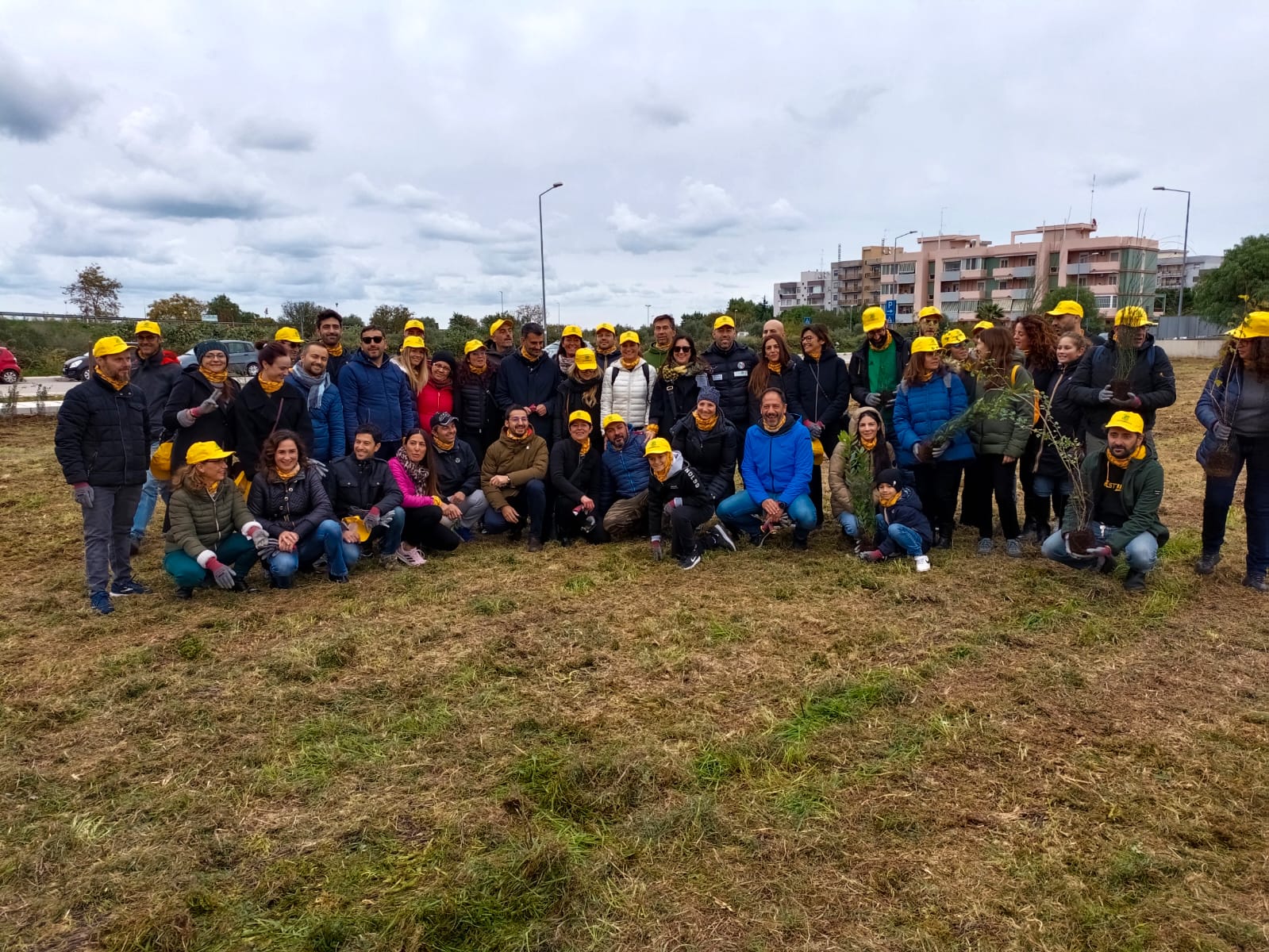
Palese - Macchie is a district in Bari, belonging to Municipality 5. Palese’s urban development has always been rather bumpy. The oldest surviving buildings date back to the last decades of the 19th century and the first three decades of the 20th century. With increasing economic development after World War II, the neighbourhood’s appearance changed. Trulli and haystacks were gradually replaced by blocks of flats and buildings between Modugno and Capitaneo streets (the centre of Palese). This accelerated until the area was almost completely saturated by the end of the 1990s. Having long lost its purely rural vocation, Palese has been the at the centre of a growing increase in the population over the last thirty years and it has become a predominantly residential area. The demand for construction has increased and so the property values, jeopardising Bari's traditional characteristic as a green lung and rural suburb. Amongst other things, it is one of the few districts in Bari where no green areas or public parks were provided in the 1952 Regulatory Plan.
By planting of 1,000 trees and shrubs, Fastweb's goal is to reactivate the process of filling the Apulian capital with greenery. Species used: flowering ash, ash, mastic, myrtle, broom.
Mola di Bari

Mola di Bari is a municipality of more than 24,000 inhabitants in the metropolitan city of Bari, Puglia. Its fishing port is considered among the most important in the region. The project was carried out in the northwest part of the city, in a green area inserted within a residential area located between Via Alessandro Volta, Via Francesco Baracca and Via Moro. The forestation work involved the planting of trees and shrubs, chosen for their greater adaptability to the urban context. These are largely melliferous plants or those with a very low level of pollen allergenicity.
With the planting of 1,000 specimens, including trees and shrubs, Fastweb's goal is to increase the tree canopy, creating shaded areas to promote the usability of the area by residents of neighboring homes, while also improving the landscaping due to the pleasant blooms of shrubs such as hawthorn and broom. The plants planted will also become a habitat for small birdlife and encourage their establishment. Species used: field maple, downy oak, hawthorn, broom.
Catania
Parco degli Ulivi, San Nullo
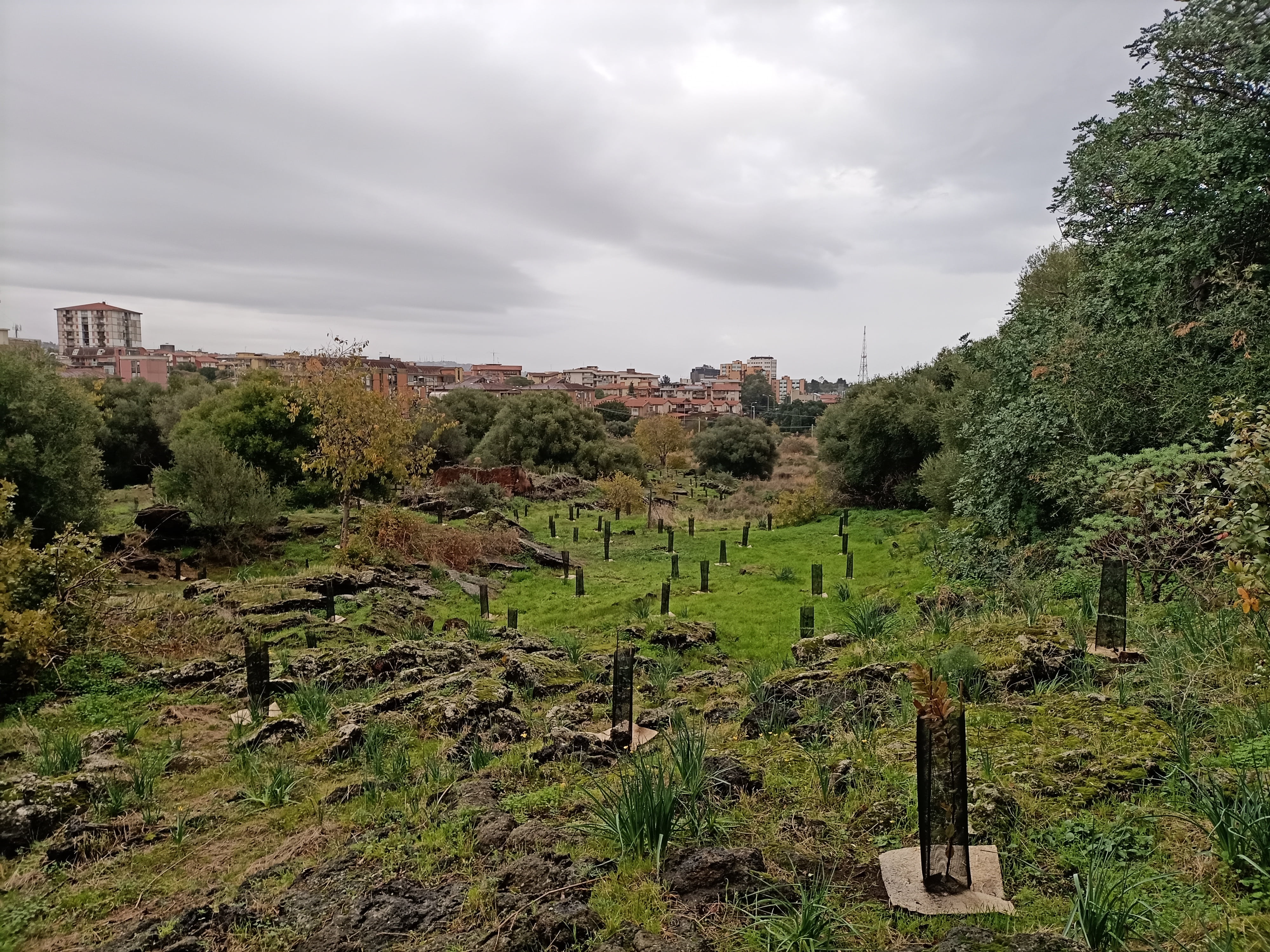
According to the Greek historian Plutarch, Catania owes its name to the Sicilian katane (grater, a word of Indo-European origin), due to its association with the ruggedness of the lava terrain on which it stands, or also from the Latin catinum (catin, basin) due to the natural basin-like conformation of the hills around the city or as a reference to the Piana basin. In the 16th century, Catania was nicknamed 'the Sicilian Athens' because of the thriving university founded during the previous century. Another notable nickname is 'Milan of the south' in relation to the big economic boom it experienced in the 1960s.
Parco degli Ulivi is a small oasis of rocky, wild nature located in the northern part of Catania in the San Nullo area, covering an area of almost 40,000 square metres. It is one of the city's lesser-known green spaces. It was inaugurated in 2001, three years after work began in 1998, and it boasts 317 trees. The park, together with the Playa bush, is part of a Catania City Council project to create an inclusive playground which is also accessible to users with motor or sensory impairments.
By planting of 1,000 trees and shrubs, Fastweb's goal is to create a green lung in an urban context, improving its usability whilst helping to increase the park's biodiversity. Species used: carob, holm oak, strawberry tree and broom.
Pomigliano d’Arco
Metropolitan City of Naples

Pomigliano d'Arco is an Italian municipality with 39,705 inhabitants located in the metropolitan area of Naples. Pomigliano is particularly known as one of the largest and most developed industrial hubs in southern Italy.
The forestation project was carried out in the southern suburbs in an undeveloped green area located between Via Giuseppe Campanale and Via Francesco Testa; in the early 2000s this area was part of a building expansion project in the neighbourhood. The area was originally intended to be used as gardens to compensate for the construction work on a large surrounding building complex. Unfortunately, the garden project was never realized.
Subsequently, the area became an illicit dumping ground for urban waste and poor maintenance made it unusable for the local residents. Today, thanks to the collaboration of Fastweb and Legambiente, the municipality’s intention is to redevelop the green area by creating a real garden in order to improve the quality of life for residents.
The green space that will be created will provide a leisure and meeting area for families and young people and will also improve the landscaping of the neighbourhood.
By planting 1,000 trees and shrubs, Fastweb's goal is to create a green lung in an urbanized context by improving its usability of residents.
Species used: Rosemary, laurel, sage, olive, maple, rose oleander.
Pescara
Via Celestino V
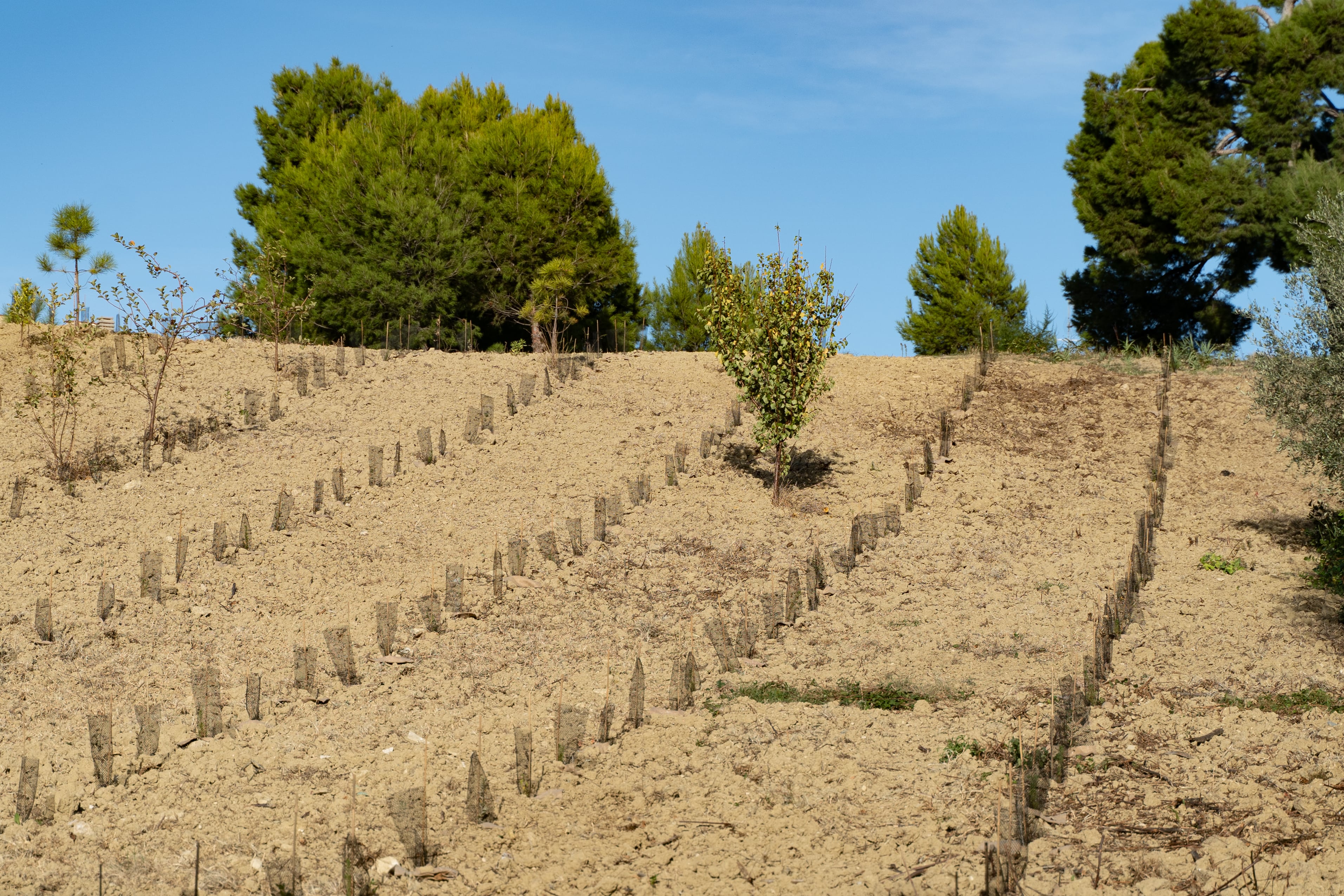
The area, spanning approximately one hectare, is located in the town centre, next to a complex of small houses. The area is devoid of trees and the purpose of the intervention is to increase the green area to mitigate the effects of heat islands and create a green belt for locals. The forestation work will also improve the area in question from a landscaping point of view. The new plants that are planted will, in time, create a green space that will benefit the entire surrounding area and fit in with the urban landscape. The forestation project is therefore an important contribution to the sustainable development of the city and for safeguarding the quality of life of Pescara's residents.
Species used: hawthorn, broom, priest's beret and red juniper.
Cagliari
Via Enrico Toti - Municipality of Pirri
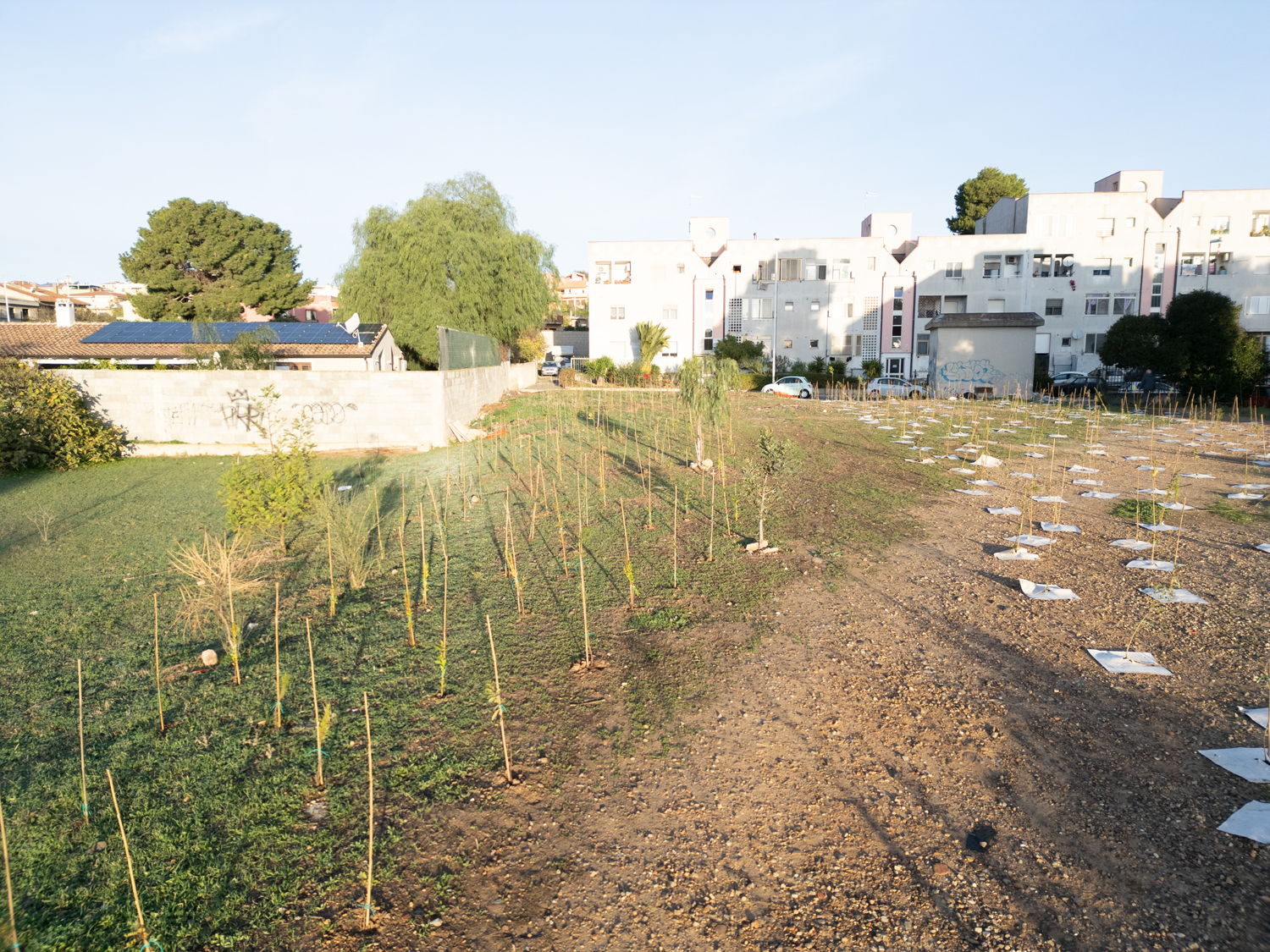
The area is located in the northern outskirts of Cagliari in a highly urbanised area. The intervention aims to create a new green space for the city and improve air quality, contributing to the mitigation of pollutant emissions and the enrichment of the local biodiversity. The plants that are planted will create shaded areas as they grow that will mitigate the effects of the summer heat as well as the heat island phenomenon, allowing residents, particularly children attending the school and the nearby youth club, to enjoy a regenerated green space.
Species used: juniper, Mediterranean cypress, holm oak, laurel and rosemary.



















